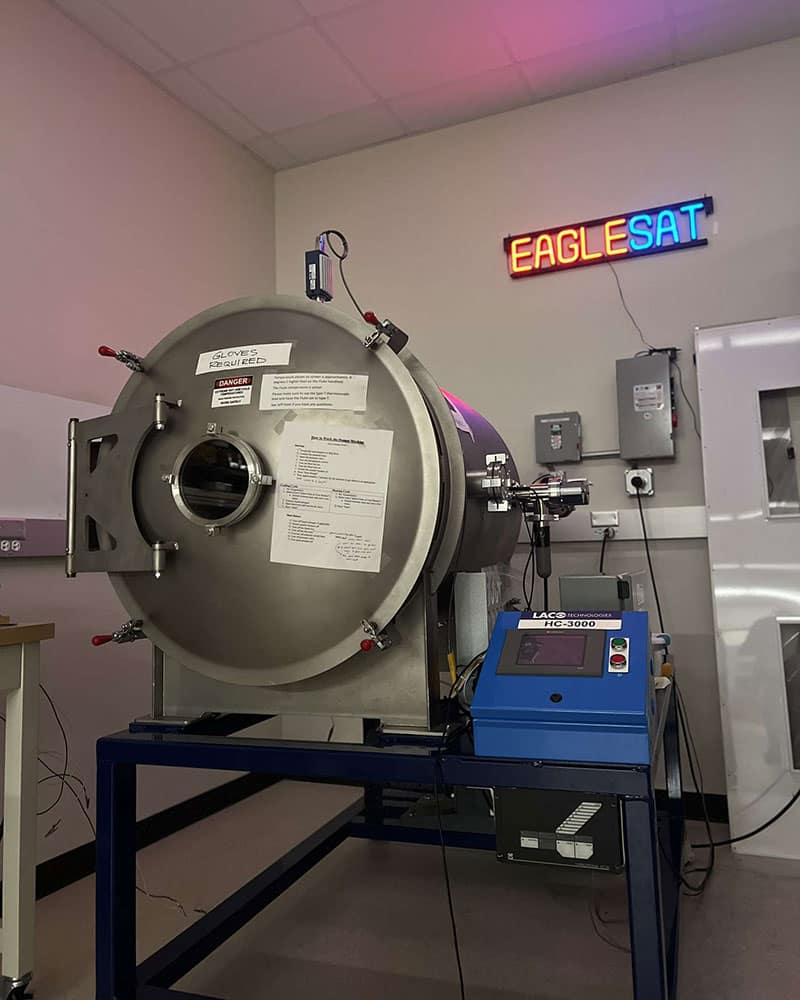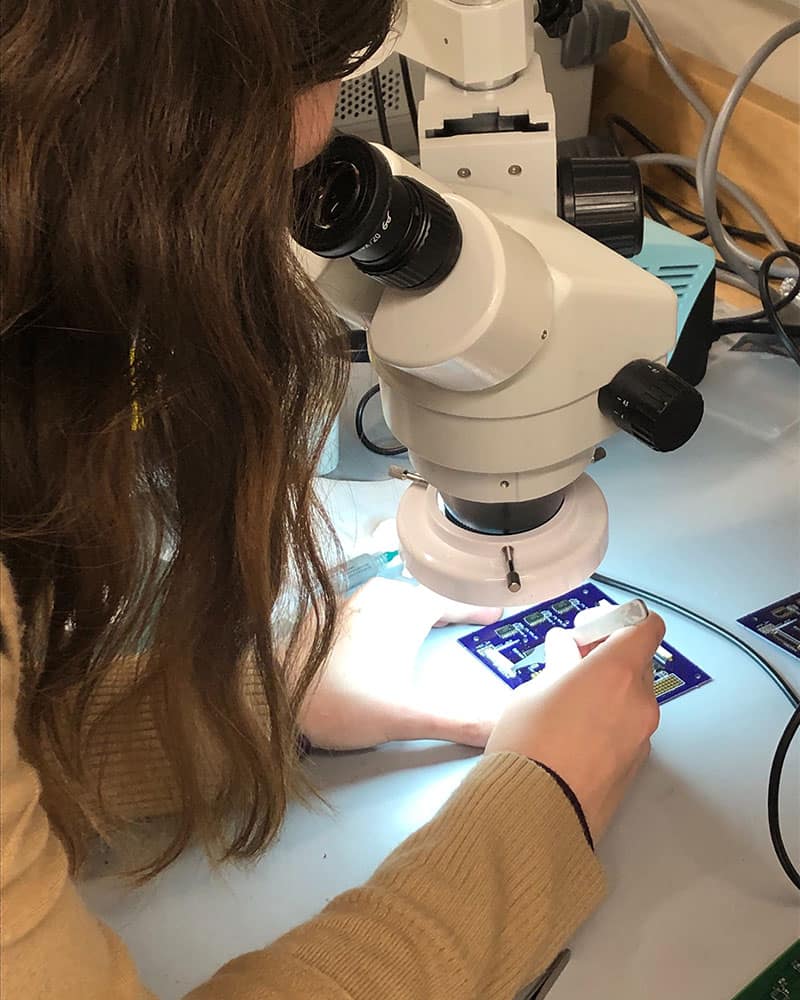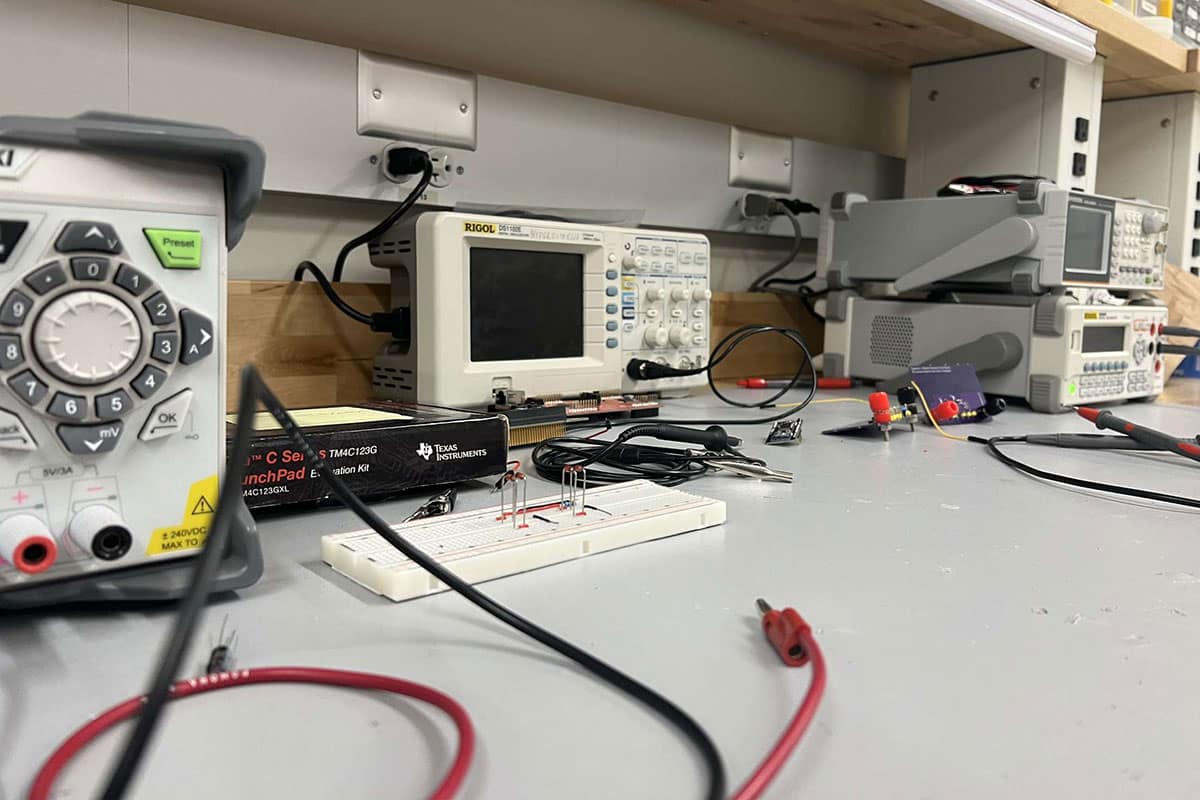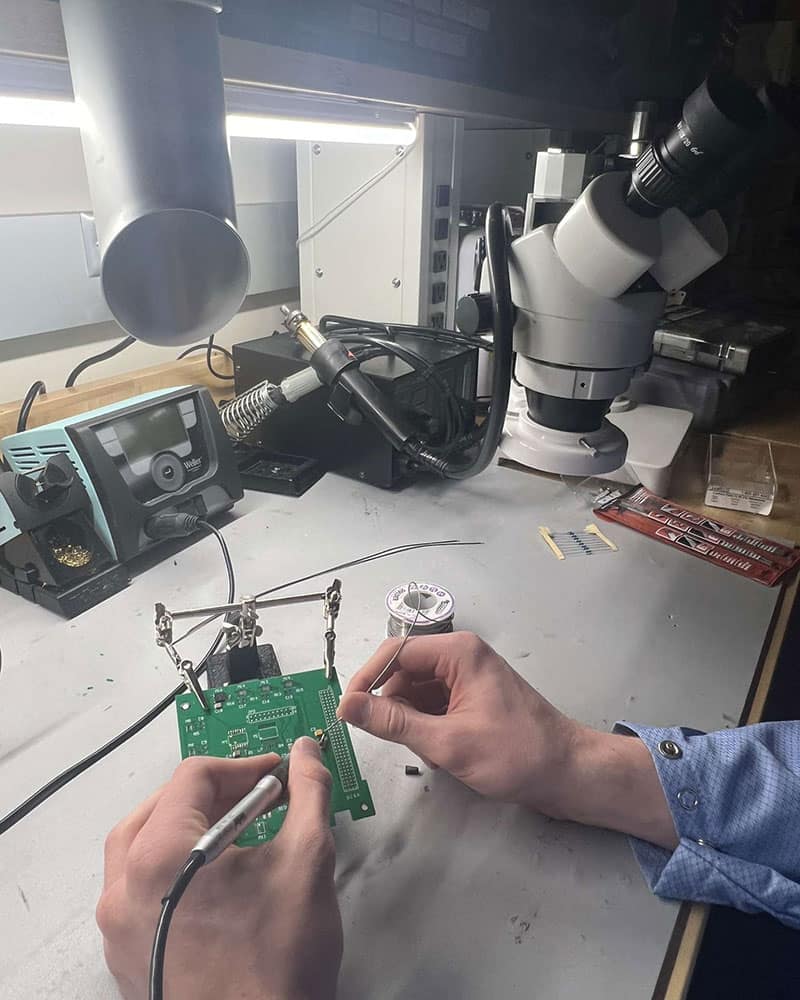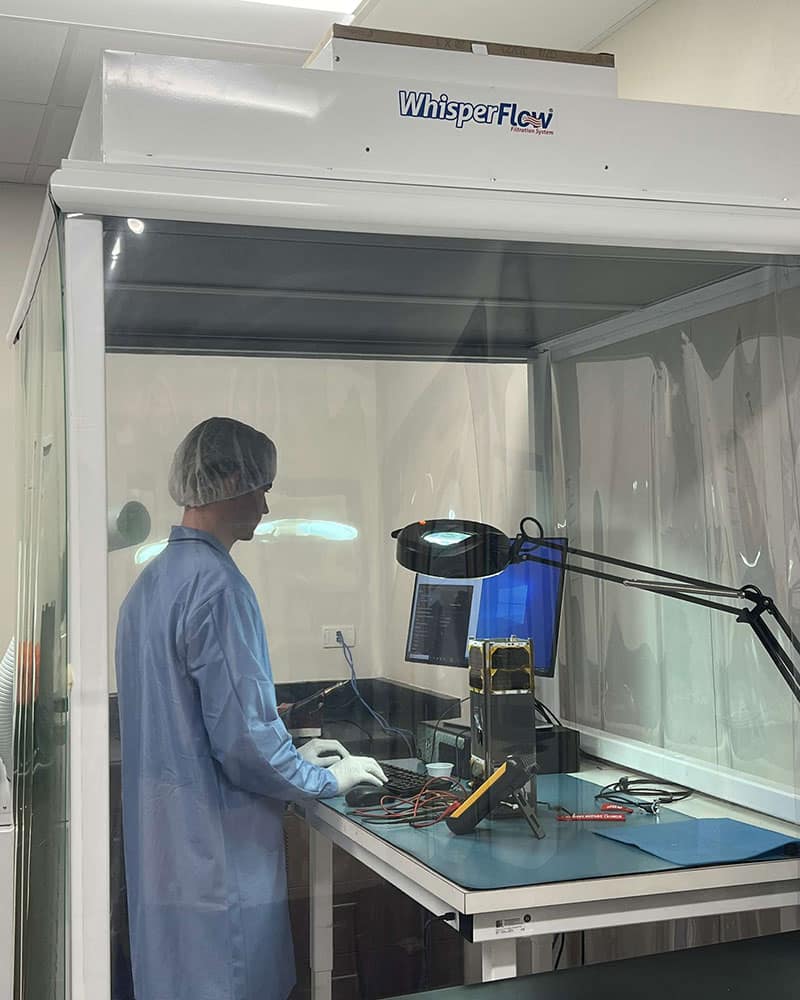The EagleSat Lab is a research and design lab for the EagleSat space grant project. The team is currently working on EaglSat-2, with a payload designed as to analyze the degradation of memory and data on the current solid-state memory devices used today, such as flash memory, SD cards, memory sticks, etc. The payload is called the Memory Degradation Experiment. Computer memory types being tested are Flash, Ferroelectric RAM, Magnetoresistive RAM and Static RAM.
The EagleSat Lab is located in Building 76 (STEM Jim and Linda Lee Planetarium), Room 127, and is equipped with an ISO 8 clean room, a deep space-rated vacuum chamber, and electrical test and measurement equipment. The ground station for the project is on the roof of Building 75 (AXFAB) and is controlled and operated from the computers in the lab. Once launched, the satellite ground station on campus will be able to communicate with this satellite for a total of about nine minutes every day as it passes overhead. Launch is projected for Q1-2025.
Descriptions of modulation formats and communication protocols for EagleSat-2
The UHF transceiver onboard the EagleSat-2 satellite periodically transmits telemetry signals on a 435.7 MHz radio frequency (RF) band. This is an amateur radio (ham radio) frequency band.
AX.25 protocol is used for telemetry transmissions between the satellite and the ground station located at the Embry-Riddle Aeronautical University Prescott Campus. Any ham radio operator with the capability to decode AX.25 will be able to decode the telemetry data.
The modulation format used is 2-GFSK, and the ITU emission designator is 50K0 F1DA.
EIRP from the satellite is 31 dBm, from an altitude of 410 km (apogee) and 408 km (perigee), at an inclination angle of 51.64 degrees.
The orbital period for EagleSat-2 is 92.68 min.
Lab Information
Location: AXFAB, Room 119
Contact Us: To speak to someone about this lab or any of our facilities, call us at 928-777-6600 or 800-888-3728, or email Prescott@erau.edu.


